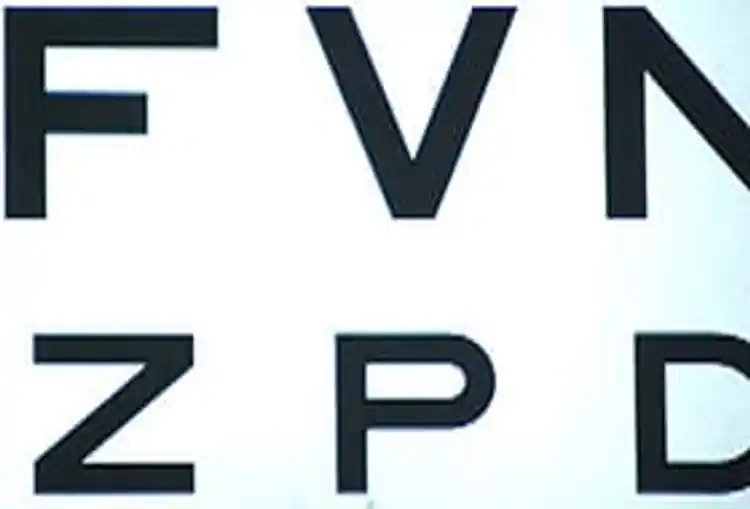Inside an Eye Exam

Hide Video Transcript
Video Transcript
Female Narrator
It's time for your yearly vision exam. What eye tests can you expect? Michael Walker, OD
Let's see how well you can see. Female Narrator
After taking a medical history, your eye doc will likely start with a visual acuity test. Michael Walker, OD
...Which is the measure of how sharp you are seeing in the distance, and up close... Michael Walker, OD
What's the smallest row of letters that you can read? Michael Walker, OD
I will often take a retinoscope, and I will shine the light beam into your retina and by seeing the reflection of that eye come back at me, I can dial in lenses and find a pretty good prescription for you without you saying a word. Female Narrator
That estimate is then placed into a phoropter. Michael Walker, OD
The phoropter is that funny machine you put right up to your eye and spin the dials and say, "Which is better one or two? Which is better three or four?" Michael Walker, OD (cont.)
and those phoropters are full of lenses, and the lenses are all measured in diopters, and the diopter determines what measurement that we make when we order glasses or contacts Female Narrator
Other tests make sure your eyes are working together as a team. Michael Walker, OD
The most common test will be a cover test. Michael Walker, OD
I have the patient look in an object far away, and I will use a paddle to cover and uncover each eye to find out if the eyes are lined up. Michael Walker, OD
Eye muscle movements are important. Many times patients have an eye muscle problem and don't even know it. School work may be failing, strain, fatigue, it is not always the environment, it could be that your eyes aren't lined up. Female Narrator
If depth perception is a concern... Michael Walker, OD
We have the patient put on 3D glasses and they look at these images and the images have varying degrees of stereopsis or depth to them and by using that, we can quantify how much depth perception a patient has. Female Narrator
The swinging flashlight test checks how well your pupils are working. Michael Walker, OD
We shine it in the eye to make sure that the pupil is brisk and responsive to light then we will cross it back and fourth to make sure that they are both working and affecting each other, Michael Walker, OD (cont.)
when you shine the light in one eye, the other pupil should respond in kind. If it doesn't, we could have a neurological problem. Female Narrator
What about the "puff test" or what eye doctors call tonometry? Michael Walker, OD
Ah, the puff test! I can't tell you how many patients sit in my chair and go, "Doc, you're not going to do that puff test on me, are you? And I tell them, "Relax." Michael Walker, OD (cont.)
The puff test is a test that measures the internal pressure of your eyeball more specifically, it's usually looking for signs of glaucoma, which is a pressure build-up that overtime can damage the optic nerve in the back of your eye and thus lead to vision loss. Michael Walker, OD
I prefer the applanation test, which is a probe that goes directly on the eye. Now don't worry, we put a drop in to numb your eyes so you don't feel it. You'll never know anything is happening. Michael Walker, OD
Now that your eyes are fully dialated... Female Narrator
Dilating drops open your pupils so the doctor can check your retina. He may use an odd looking helmet called an "indirect ophthalmoscope"... Michael Walker, OD
"Bring your chin in and your forehead against the bar" Female Narrator
Or a powerful microscope called a 'slit lamp'. Michael Walker, OD
And I will go through to the back surface of the eye. And I can see it at many times the magnification looking for disease, infection, signs of problems, retinal tears, optic nerve damage, cataracts, corneal swelling, a whole host of conditions. Female Narrator
Because so many diseases can first be seen inside the eye, you have a greater opportunity for early diagnosis and treatment... making a yearly dialated eye exam well worth the time. 